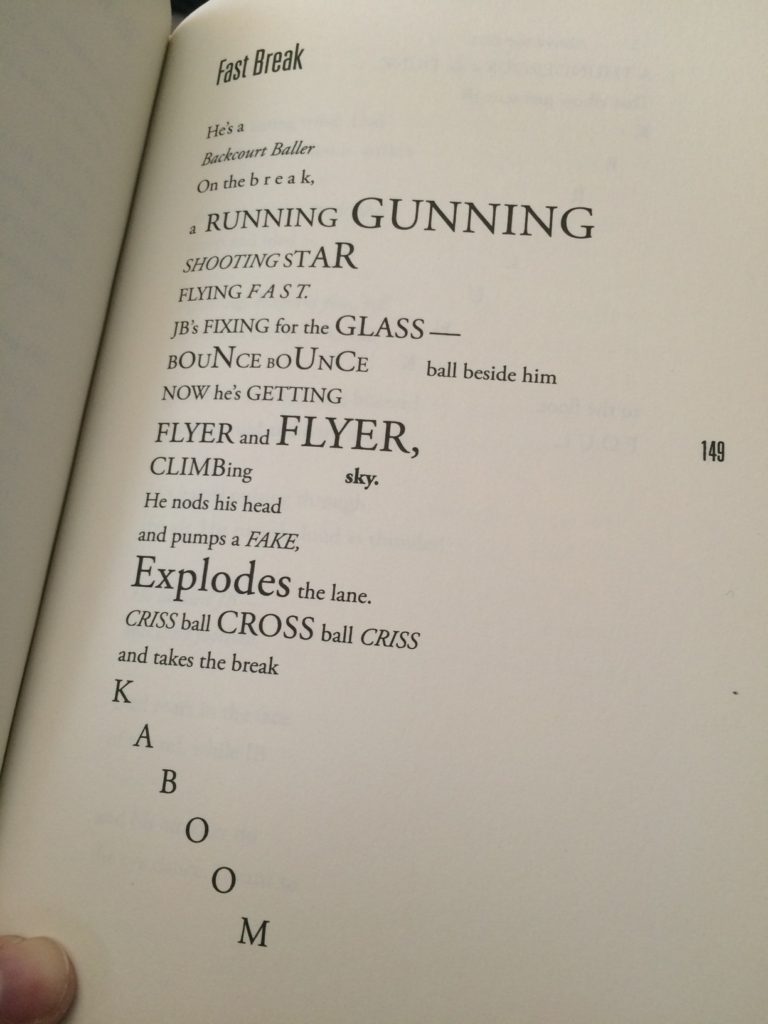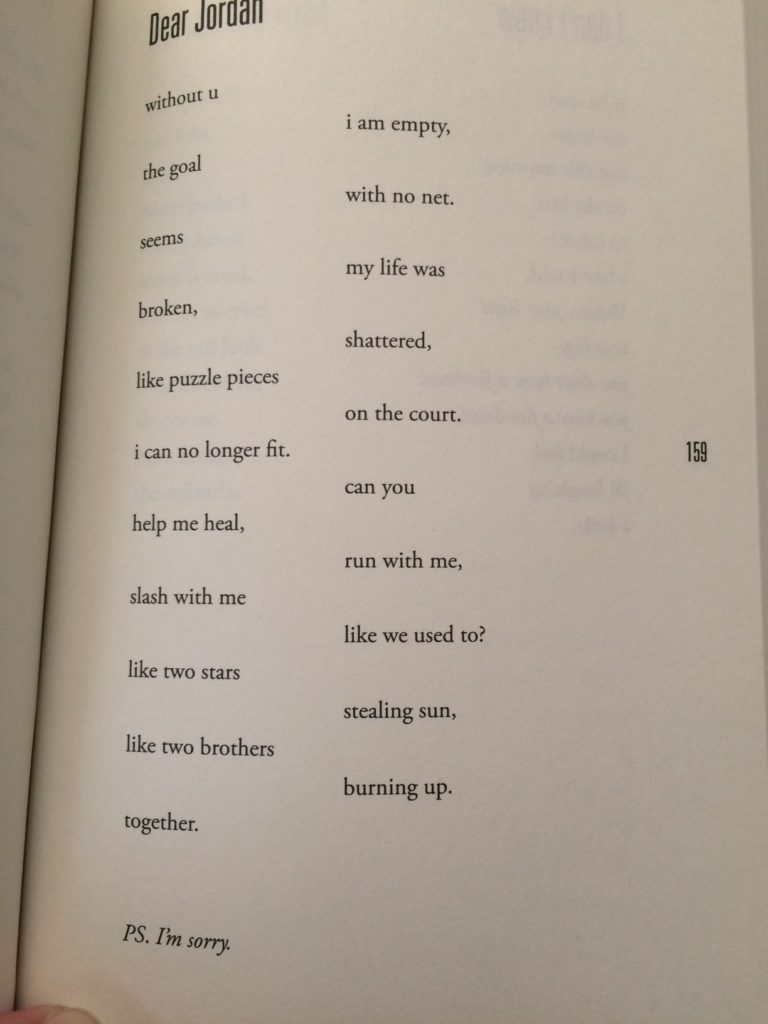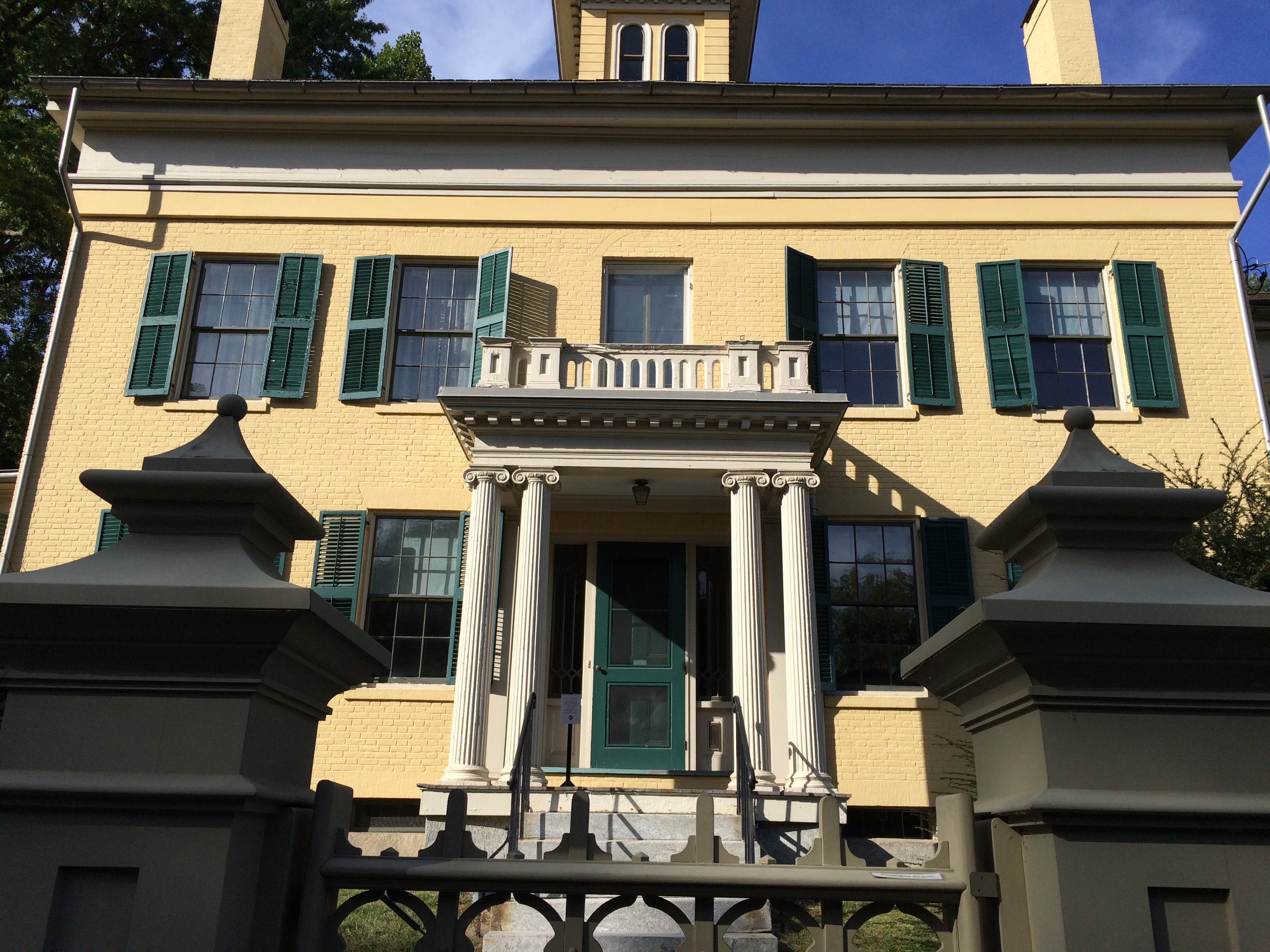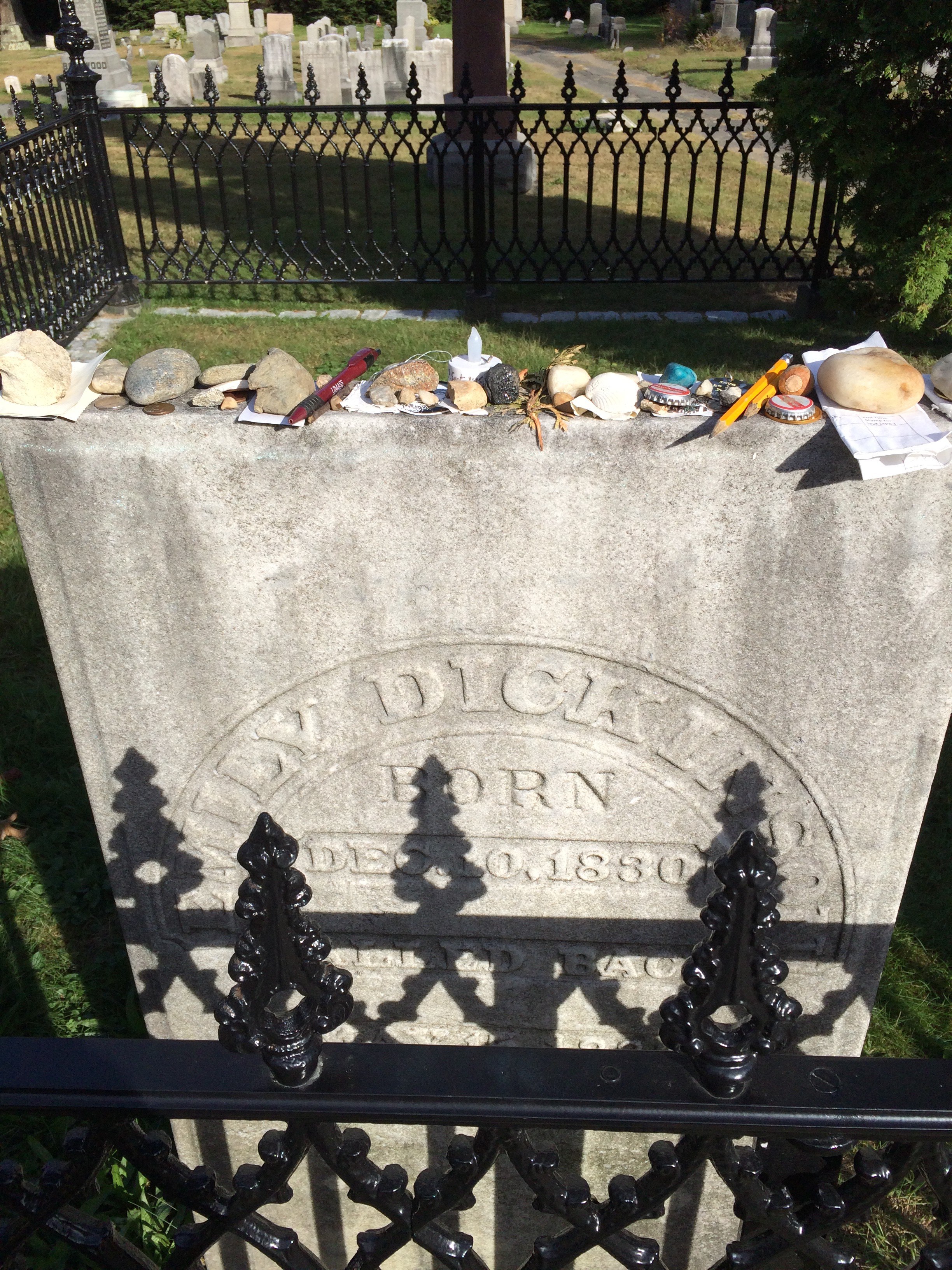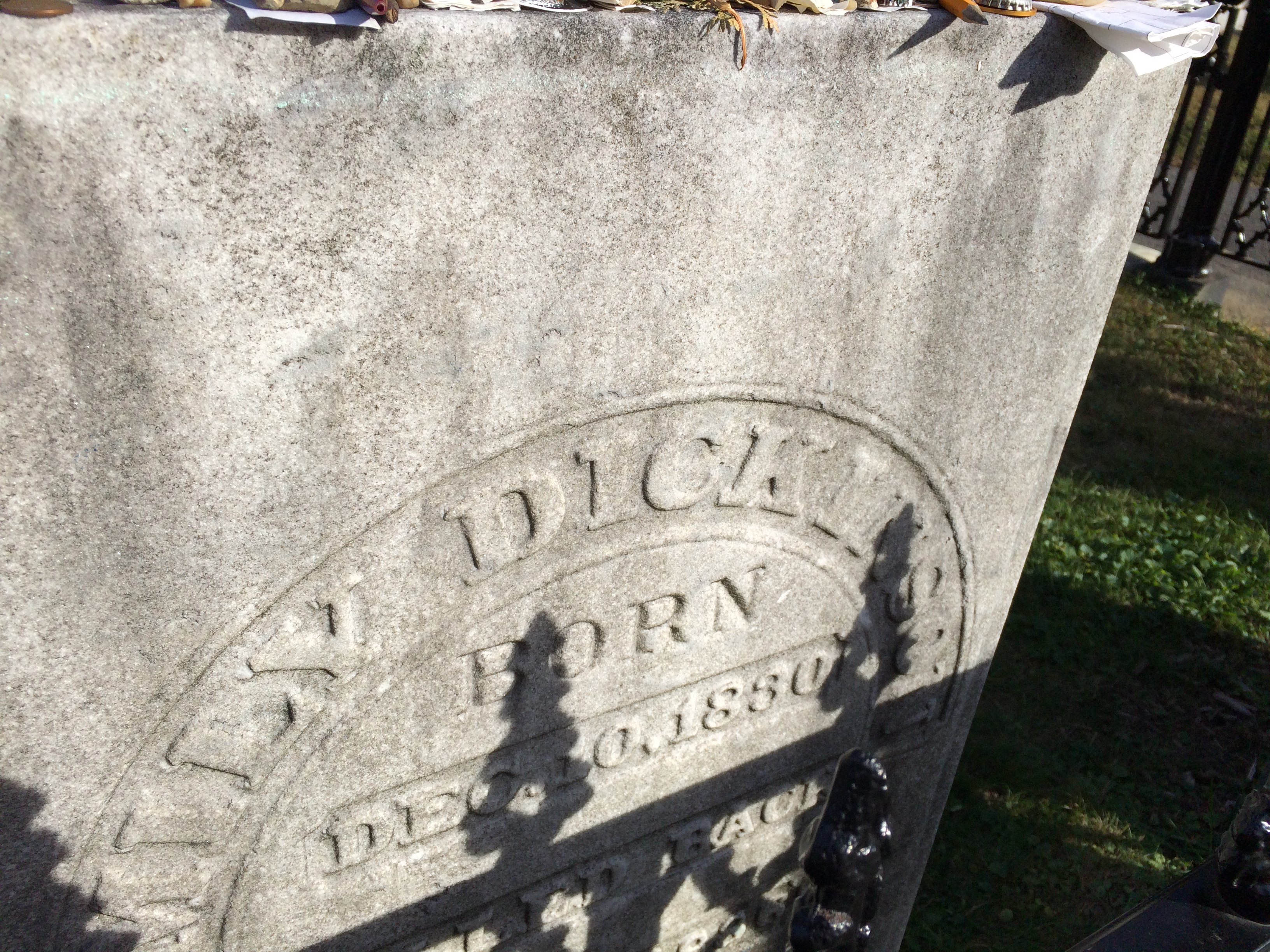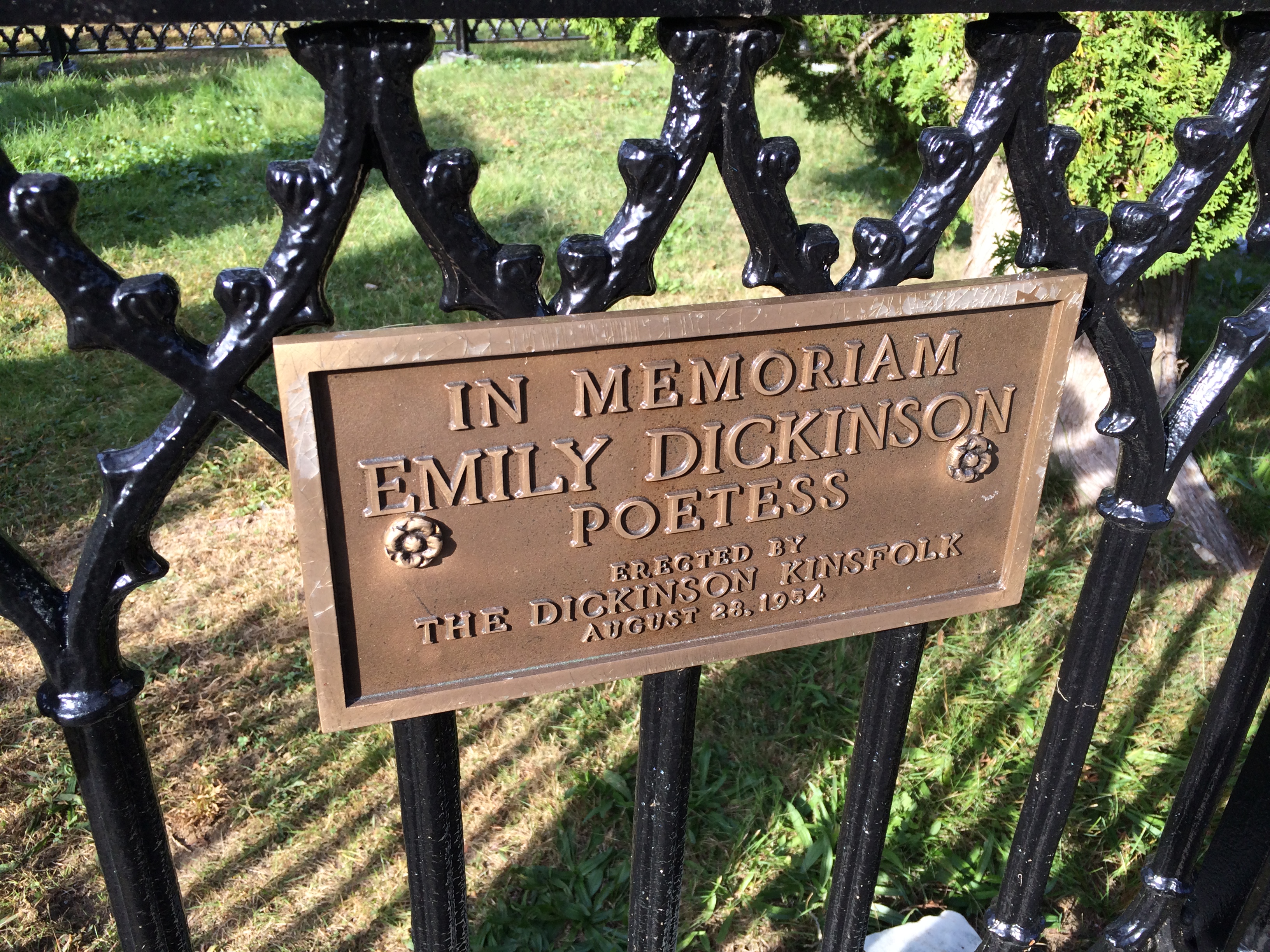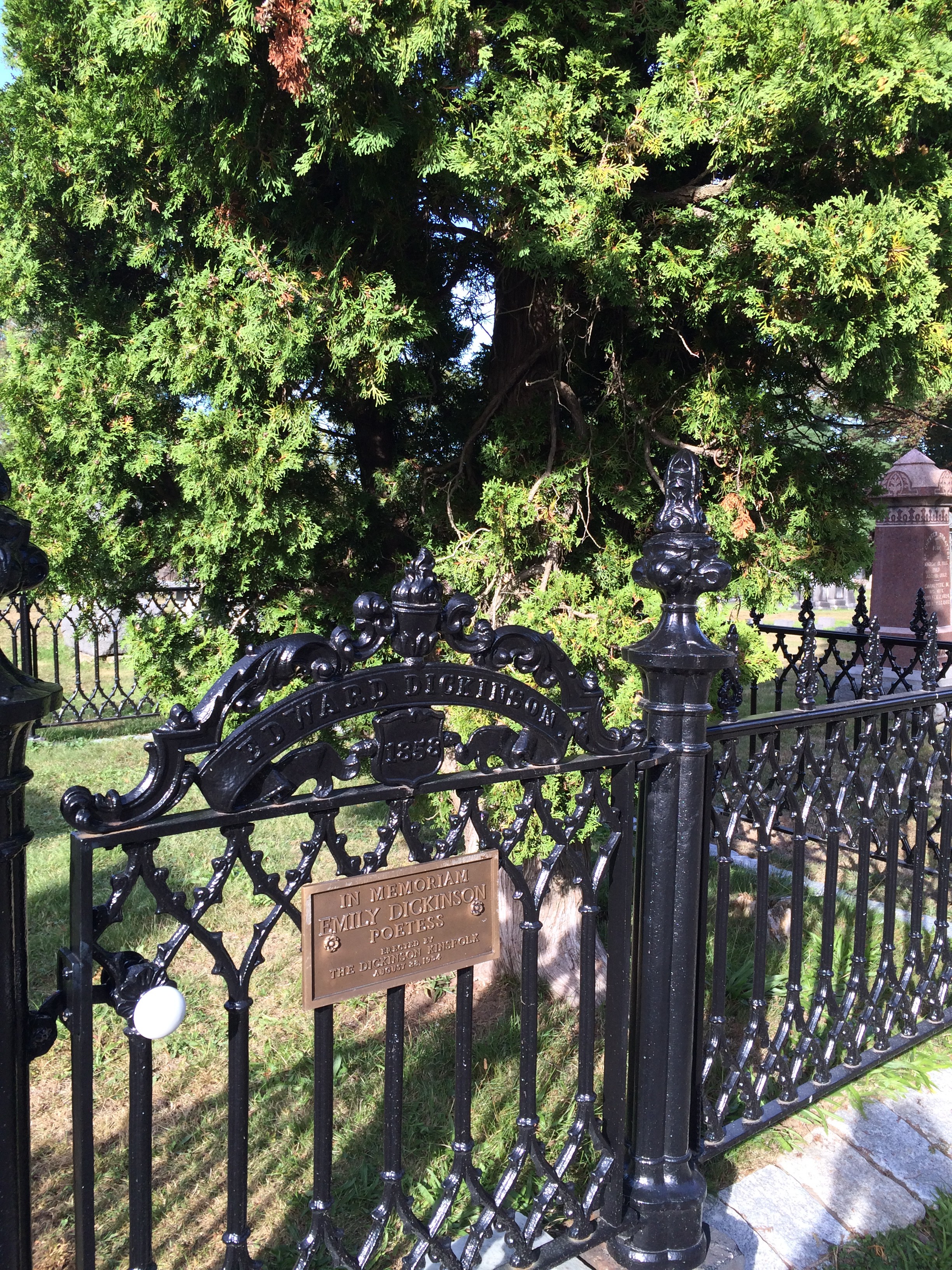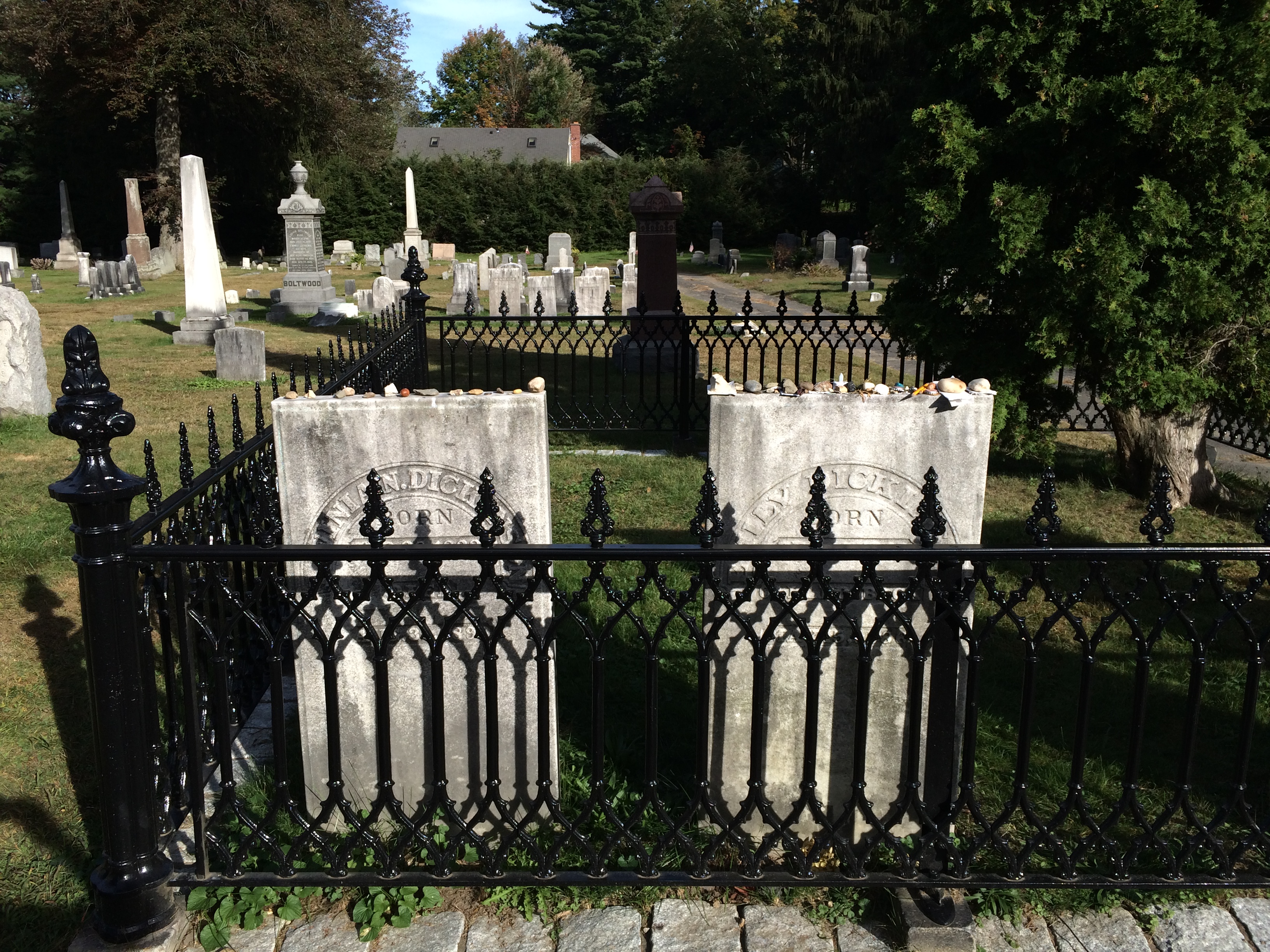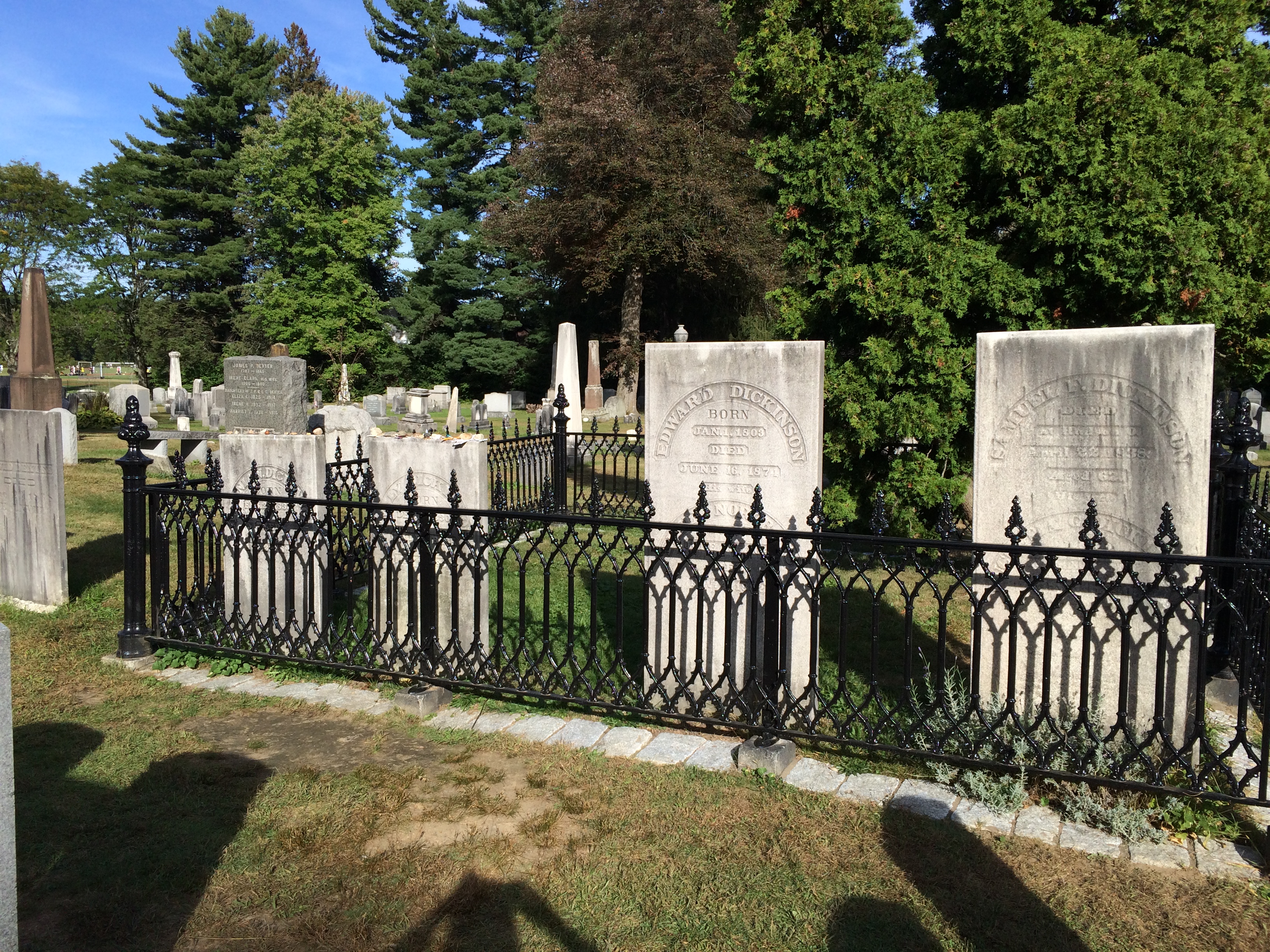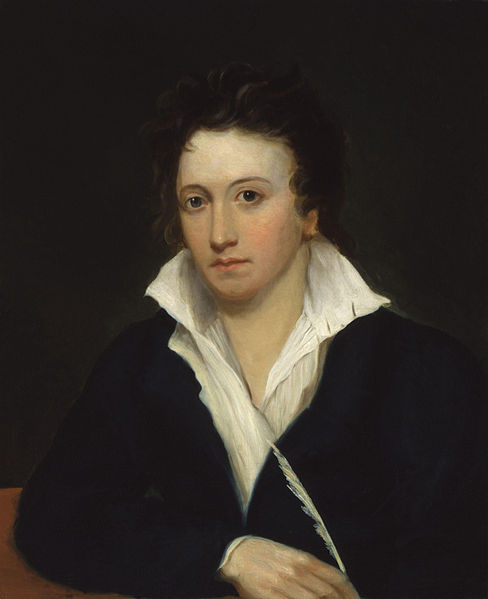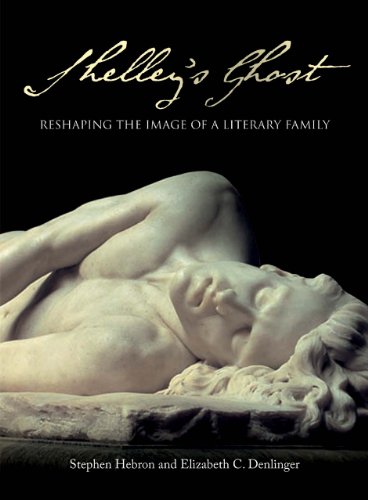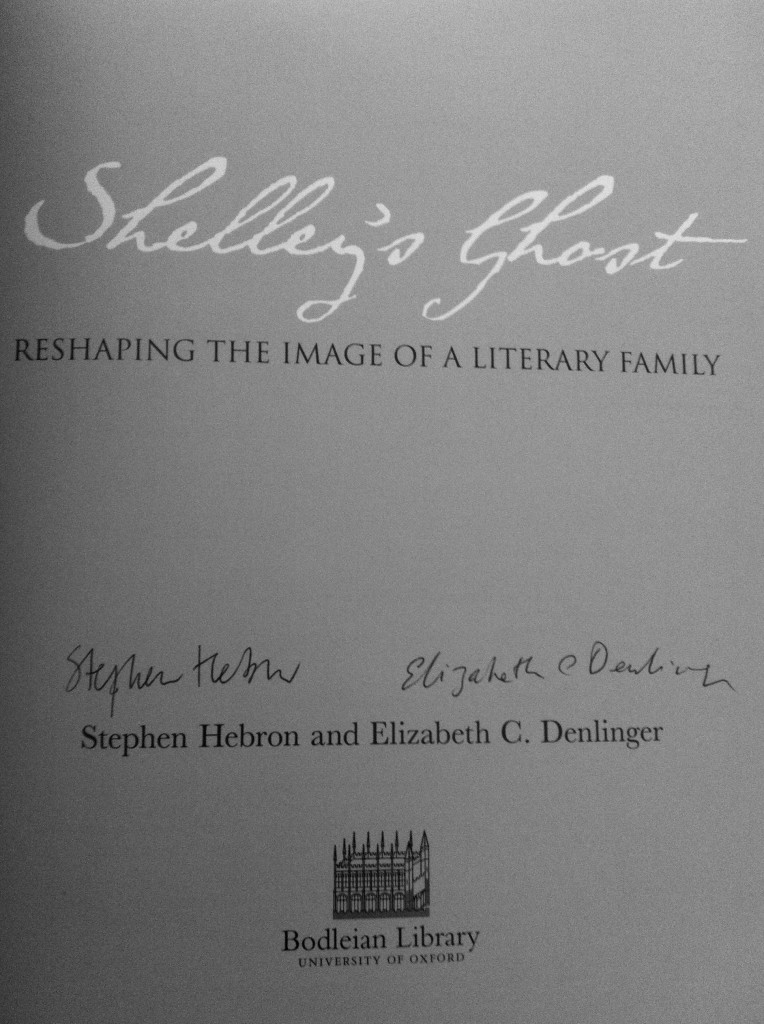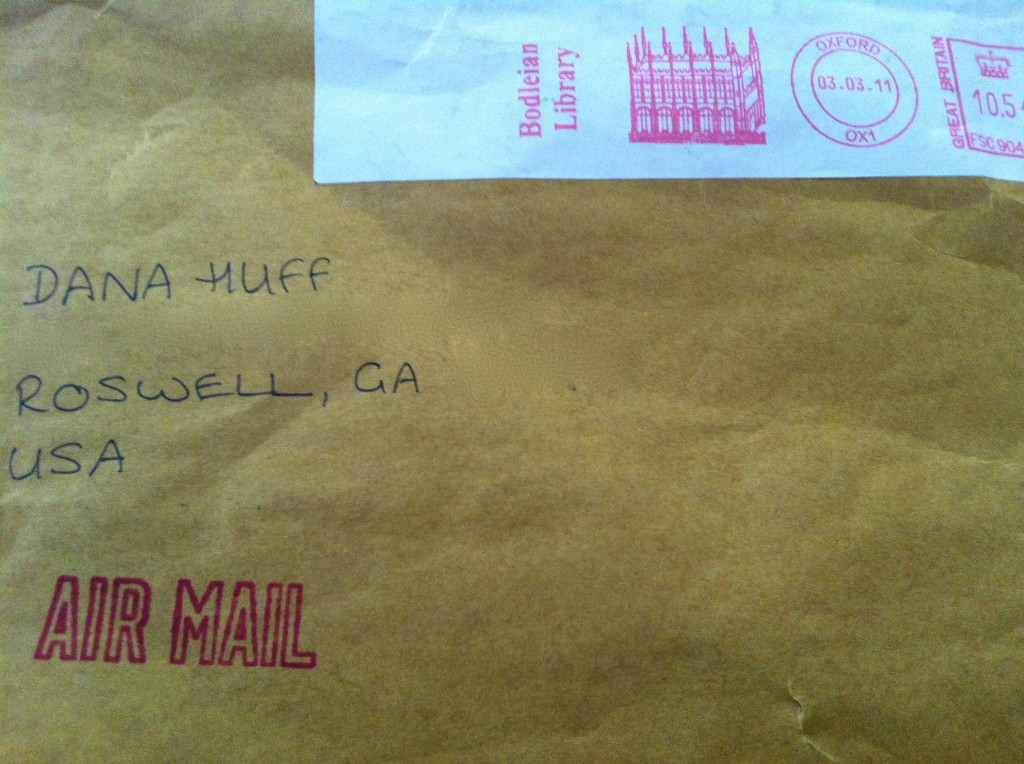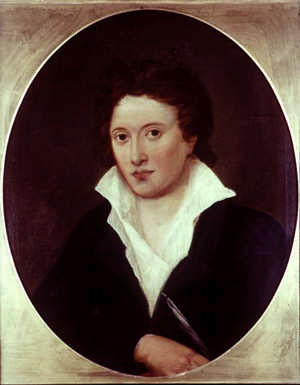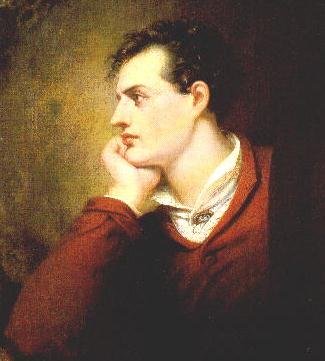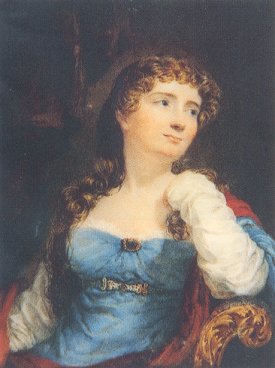It’s not a secret I love Emily Dickinson. My blog’s title is taken from my favorite of her poems. I have visited her house twice and paid my respects at her grave twice in the last year and some change. Last Friday, I had an opportunity to hear a talk by writer Jerome Charyn at Amherst College. The title of his talk was “Did Emily Dickinson Really Exist?” Of course, Charyn chose the title to provoke. He has written two books about Emily Dickinson—one fiction and the other nonfiction.


The center of his discussion concerned a new daguerreotype believed to feature Emily Dickinson and her friend Kate Scott Turner Anthon. I believe the daguerreotype is copyrighted, so I won’t reproduce it here, but you can see it on Amherst College’s website. After hearing Charyn speak about the photo and also learning more about its provenance from the person who found it, I am fairly convinced it is Emily Dickinson on the left in the photograph. Of course, it’s true that many people would say the opposite, and the only way we’ll get to the bottom of it, finally, is if the FBI is willing to look into it with their special equipment. I have a feeling they don’t spend a lot of their time verifying suspected photographs of 19th century poets, though.
The photograph’s owner let me take a picture of the copy of the daguerreotype that he brought with him. It is in a frame case that is nearly identical to the original and is the same size as the original. It’s not the best picture, so in order to see the photograph properly, please do check it out at the link I mentioned previously.
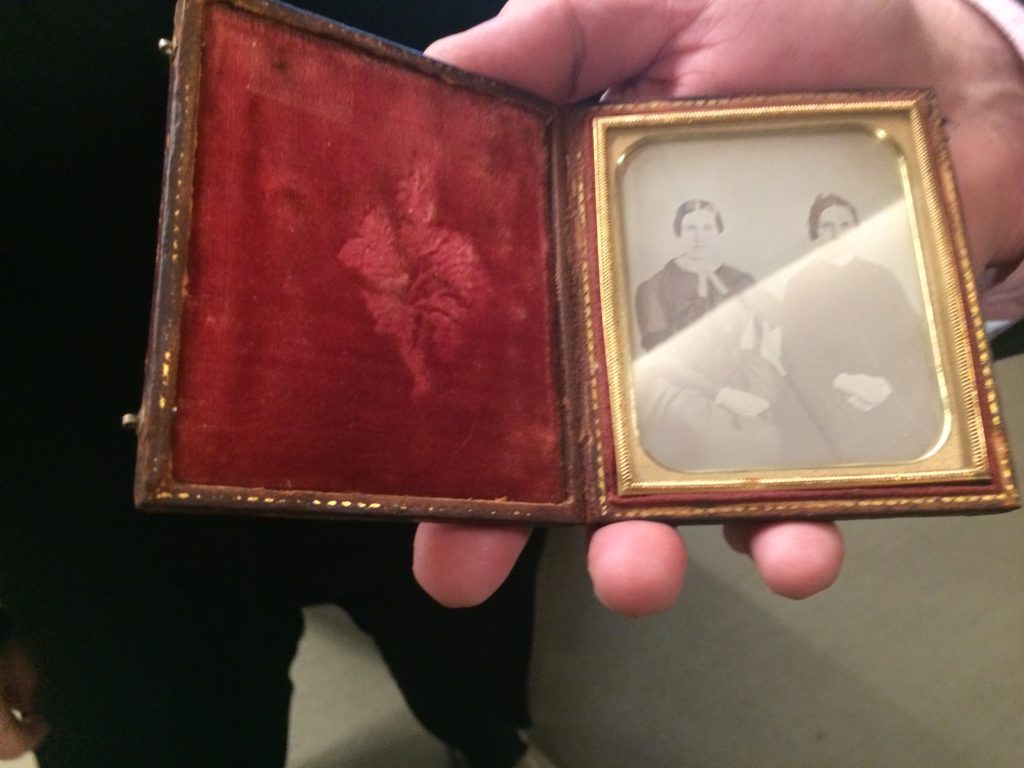
As you can see, it’s about wallet-sized and would have been a personal photo—something carried in the pocket or placed in a drawer. It’s an intimate photo. Kate Scott Turner, pictured on the right, was wearing widow’s mourning. Emily’s dress was probably blue, green, or gray (I learned a lot about how we can determine colors from daguerreotypes). I didn’t know that because daguerreotypes were printed on silver, they do not pixelate. If you zoom into a photo on paper, eventually you get dots. Not so with silver. The photograph’s owner said that we really haven’t duplicated the quality of a daguerreotype with our modern technology. Of course, I thought that was fascinating.
I learned that the known daguerreotype of Emily Dickinson was taken when she was a teenager, right after an illness, so she is a bit thinner than she otherwise would have been. The known daguerreotype has not been handled with care and has been damaged over the years. It was also made with older technology than this newer daguerreotype, and what happened was the edges of the daguerreotypes made with this older technology tended to warp the edges. The “new” daguerreotype’s owner pointed out that Emily’s thumb looks like a lobster claw.
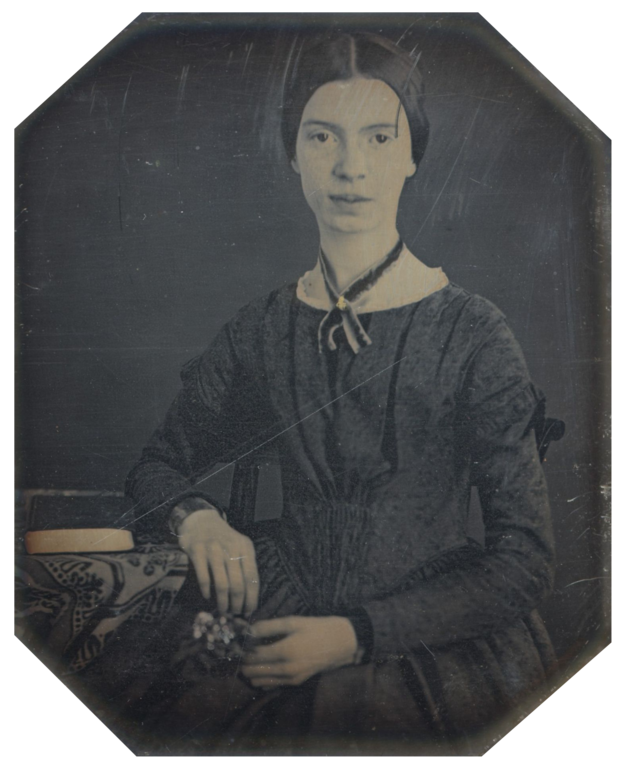
Well, it does look weird now someone has pointed it out to me. He said that there was something wrong with the way her nose looks—large on one side and thinner on the other. He said this was likely due to the same issues with the older technology. He said that Dickinson’s family didn’t think this photograph was a good likeness. However, I think if you examine the eyes, they do look like the eyes of the woman on the left in the new daguerreotype. She had astigmatism, so there is a flatness to the eye on the viewer’s left that is similar in both photos. The mouth looks the same to me as well, as does the hair. I’m not a photographer, and I know very little about the history of photography, so I learned a lot I didn’t know.
Aside from these interesting particulars, the daguerreotype’s owner said a trunk of fabric swatches for a quilt was found in the Emily Dickinson house, and he thinks one of the swatches looks like the dress Emily is wearing in the new daguerreotype. Interestingly, and even more tantalizingly, when Thomas Wentworth Higginson asked Emily Dickinson for a photograph, she responded, “Could you believe me—without? I had no portrait, now. . . .”
I have to agree, as an English teacher and a writer, that the comma Emily Dickinson uses after “portrait” is purposeful. She seems to be saying she used to have a photograph, but that she gave it away or doesn’t have it anymore for some other reason. The owner of the new daguerreotype believes that Emily gave the portrait to Samuel Bowles, a friend of both Emily’s and Kate’s. The daguerreotype’s present owner, who is a daguerreotype collector, bought the daguerreotype in a junk shop and was able to trace the provenance to Bowles.
A lot of circumstantial evidence, yes, but it convinced me. I was intrigued by Jerome Charyn’s description of Dickinson as a “sexual predator.” I think that’s going a bit far, but the subject of his talk was her poem “My Life had stood—a Loaded Gun,” which Charyn claims is near impossible to explicate. However, he thinks that this poem, which he sees as written from the viewpoint of a gun, indicates that Emily herself is the loaded gun. Kate looks distinctly unhappy. Perhaps she was coerced to pose for this portrait and didn’t want to. Dickinson, however, projects confidence, looking boldly into the camera and putting her arm somewhat aggressively around Kate.
Emily famously wrote letters to her sister-in-law, Susan Huntington Gilbert Dickinson. Charyn claimed in his talk that there is no way to read those letters except as love letters. Of course, I immediately ordered a copy of them so I could see for myself. He spoke so eloquently of how delightful her letters were that I felt I should read them myself.
Dickinson’s sexuality has been the subject of some speculation for a long time. I don’t know enough about it to make a judgment, hence my desire to read her letters and poems and see what I can learn. I can’t wait to dive into Charyn’s books and Emily’s letters and learn more about her.
The evening certainly gave me a lot to think about, and it didn’t do much to shrink my ever-growing to-read list. Charyn claims the more he learns about Dickinson, the less he knows. I was more intrigued by Emily Dickinson than ever after this talk. I loved the drive up to Amherst. The fall colors are gorgeous right now, and it was a beautiful night. It had been a long time since I did something that was geeky fun by myself.
What do you think? Is this Emily Dickinson in this daguerreotype? Anyone want to “book club” Charyn’s books with me?

